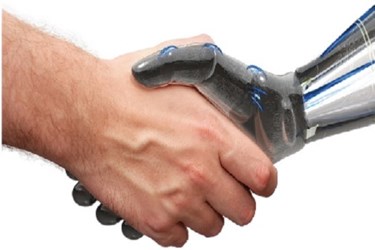The Food Processing Industry's Demand For Robotics Systems Continues To Rise
By Isaac Fletcher, contributing writer, Food Online

Members of the food processing industry are discovering new affordability, efficiency, and safety made possible by further innovation and improvements to robotics systems
President of the International Federation of Robotics (IFR), Dr. Shinsuke Sakakibara, expresses optimism for the upcoming growth of the robotics industry. In 2013, the demand for industrial robots reached an all-time high of about 168,000 units. The IFR Statistical Department expects global robotics sales to grow an average of six percent per year between 2014 and 2016. By 2016, the annual supply of industrial robots will surpass 190,000 units. Only a decade ago, sales figures were around 80,000. While these metrics account for robotics across all industries, the food and beverage industry, along with the automotive industry, showed resilient, sustained growth. Industry experts attribute the climb in sales to three main factors: factory modernization, increases in production capacity, and rising demand in emerging markets.
High speed, accuracy, and agility are all key benefits of a pick and place robot, but much of the recent demand from food producers relates to food safety and the use of robots to improve hygiene during the manufacturing process. Modern robotic food systems are faster, more compact, and more affordable compared to those of the past. They have brains, or controllers, which manage robotic arms — often up to four of them at once — from a single central processing unit (CPU).
Efficiency is further improved by robotic vision systems, which food manufacturers have discovered to be hugely beneficial, as the robot can replicate the hand-eye coordination of a human. This coordination allows for tasks like picking up objects off of a conveyor, an application that can help reduce waste and increase efficiency. Some robotics manufacturers have incorporated vision systems into the controller, freeing food producers from having to purchase third party software or an external PC. Vision technologies also allow food producers to incorporate vision line tracking, barcode reading, and other processes into their robotic setups, which can significantly cut time and costs of production.
What is the future of automation in the food industry?
The most recent generation of pick and place robots contain fewer moving parts than older versions. This factor has also contributed to the fall in prices in modern versions. Additionally, due to the fact that robotic systems can be updated with new software and a selection of different modules depending on the task, a robot can quickly and easily be changed to keep pace with changing trends in processing and packaging. The purchase of a modern robotic system that can be reconfigured and repurposed means that more processors are likely to adopt modern robotics and continue to see a return on their investment throughout the system’s lifespan, which can typically be upward of 20 years.
Not only can producers increase their efficiency, but robotics allow for a reduction in workforce injuries, which are often caused by performing repetitive tasks in cold environments. The removal of the human element from certain areas of processing means a reduction in the occurrence of ailments like carpal tunnel syndrome and tendonitis. Removal of the human element from animal processing also means the removal of human error in processes like cutting meat, resulting in precise, consistent results while also avoiding related injuries.
With improvements in affordability, efficiency, and food and worker safety, it is little wonder that the growth in demand of robotics systems has continued at a steady rate. The food processing industry stands to benefit greatly from the advancements being made in robotics. With the adoption of robotic systems, food processors can capitalize on current and emerging markets with factory modernization and increased processing capacity.
